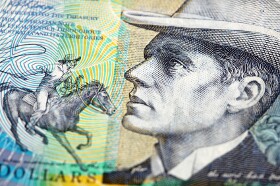The Australian dollar fell against most major currencies today, with the exception of the Great Britain pound and the New Zealand dollar. The market sentiment remained in the risk-off mode, and domestic macroeconomic data was unfavorable to the currency of Australia as well.
National Australia Bank reported that both business conditions and business confidence fell in December. Conditions fell from +4 to +3. Confidence dropped from 0 to -2, touching the lowest level since July 2013. Alan Oster, NAB Group Chief Economist, commented:
After showing initial signs over recent months, it now appears that business conditions have stabilised following their sizeable decline since mid-2018. The decline in conditions has been fairly broad-based across the states and is evident across industries.
He also mentioned the divergence between confidence and conditions and talked about the necessity of monetary stimulus:
At present there appears to be a relatively large divergence between confidence and conditions, and we will continue to watch the survey to see how this resolves. Though, if confidence and forward orders remain weak, it is likely that the early part of 2020 could see further deterioration in the growth momentum (especially in private sector demand). We think that more policy stimulus will be needed to boost the economy over 2020
Meanwhile, risk aversion persists due to the spread of the coronavirus. The Aussie, being a currency related to commodities and growth, is susceptible to a negative sentiment, which could explain the currency’s poor performance lately.
AUD/USD dropped from 0.6760 to 0.6743 as of 9:10 GMT today. EUR/AUD climbed from 1.6295 to 1.6338, touching the high of 1.6355 intraday. GBP/AUD slipped from 1.9308 to 1.9292. AUD/NZD went up from 1.0327 to 1.0335.
If you have any questions, comments, or opinions regarding the Australian Dollar, feel free to post them using the commentary form below.
